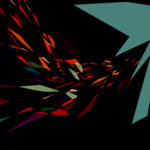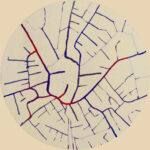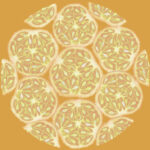Visualizing
the Virus
Animal Agribusiness
Life is a Casual Pandemic
For those working on American factory farms, life before COVID-19 was a casual pandemic. In the late spring of 2013, Porcine Epidemic Diarrhea virus (PEDv) began to emerge on the Great Plains, and within a year it had taken the lives of some seven million pigs in the United States. Evading the virus seemed nearly impossible, and yet, when I was doing ethnographic research on farms afflicted by the epidemic, the solution was deemed evident: managers of a large-scale pork corporation would discipline workers’ (and their own) living arrangements, to ensure that pig viruses would not transfer across human bodies and infect healthy barns of animals.
Prior to the imposition of these biosecurity protocols, households in the region tended to split their labor across multiple sectors of animal agribusiness in order to make a living. However, companies soon claimed it was imperative that someone who toiled in a slaughterhouse was not living, or even socializing, with an employee in a breeding barn. The bustling boom towns that these farms engendered, full of employees laboring for different corporations, appeared to be morphing into risky spaces where hog mortality and economic uncertainty could be produced through everyday acts of sociality and intermingling. As I saw the social worlds and public spaces of this small town America — bars, churches, clubs — beginning a transformation towards biosecurity, I also began to see a different reality of human life: the place of working humans within overdeveloped American industrial systems. These farms were not simply places of generalized human domination over animals; They also revolved around reforming mundane dimensions of human social life to make them amenable to intensifying industrialized animal growth.
Attempts to standardize hog life on a massive scale in rural America transformed humans into vectors of disease. It seemed clear that not enough had been written about the everyday, profound costs that workers incurred to maintain the reproduction of capitalist animal industry. What analytical category could best capture the systematic limiting of circuits of kinship, domesticity, and sociality that, for example, transformed the routine practice of workers sharing a bottle of wine in the park into a calculated scene of risk for pigs’ numerical proliferation?
When I first published my article reflecting on this phenomenon, I landed on “confinement” as a metaphor that could link the experiences of hogs locked in barns with workers forced into rigid lanes of friendship and family. I admittedly regretted using that term shortly thereafter. It risked trivializing both the physical confinement of hogs in barns and the actual imprisonment of people. But the right phrase was not evident to me until after COVID-19, when public health guidelines started locking down people into narrow household units and lanes of sociality in the United States. In those early days of the pandemic, the American slaughterhouse was a tinderbox of viral transmission. But embryonic forms of social distancing were normalized routines in some meatpacking communities for at least a decade prior to COVID-19’s emergence, marshaled to augment the extraction of profit from hogs.
Work in factory farms is characterized by routine pandemic sociality. People in the barns, packinghouses, and towns have been living in something akin to capitalist pandemic conditions for over a decade. Scholars such as Rob Wallace (2016) and Celia Lowe (2010) have made the case that industrialized animal agribusiness incubates pathogens that could leap across species; they have been warning for some time that these operations are key sites of global zoonotic disease risk. A glimpse into life in these industries can throw the supposed exceptionality of the COVID-19 pandemic into stark relief, instead illuminating the routine social sacrifices that are endured to reproduce “normal” capitalist industry as it is. In towns re-organized around pig viruses, it is not only that viruses could mutate and escape. Routine life there is a pandemic.









